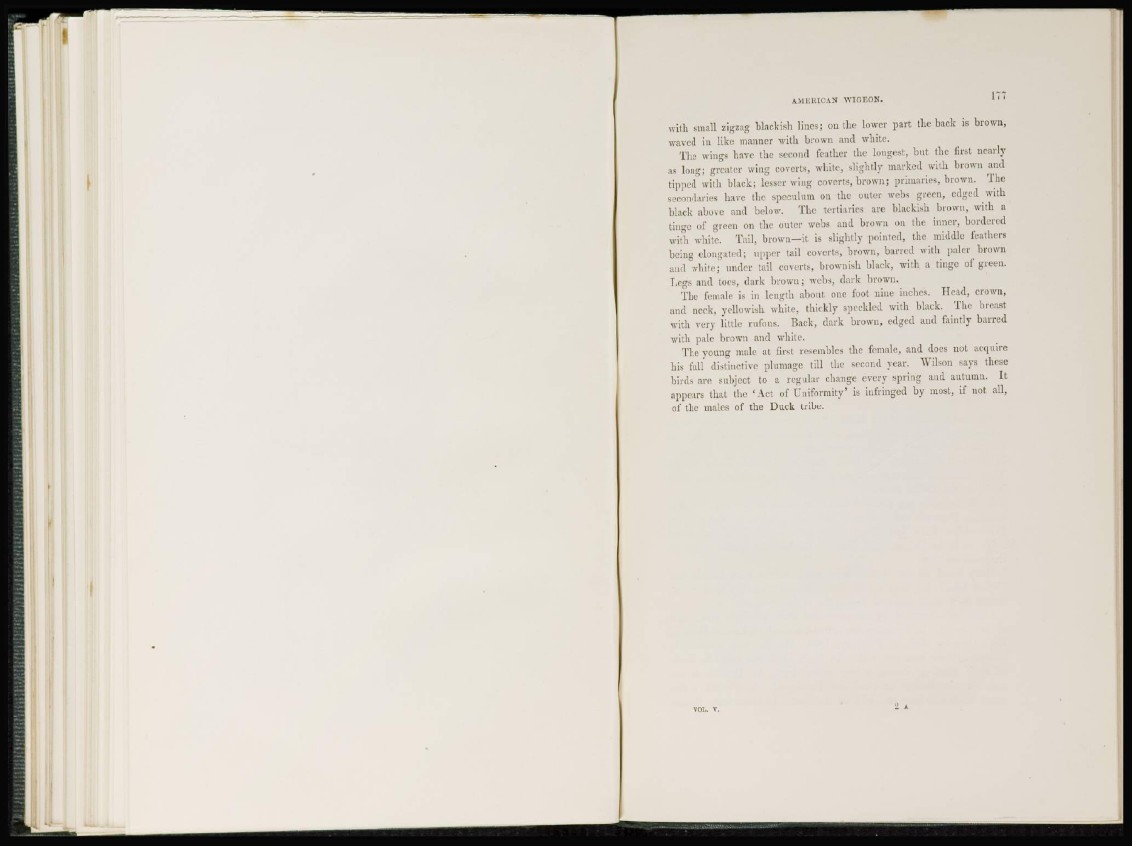
A M E R I C A S W I G E 0 N. 177
with small zigzag blackish lines; on the lower part the back is brown,
waved in like manner with brown and white.
The wings have the second feather the longest, but the first nearly
as long; greater wing coverts, white, slightly marked with brown and
tipped with black; lesser wing covert-;, brown; primaries, brown. The
secondaries have the speculum on the outer webs green, edged with
black above and below. The tertiaries are blackish brown, with a
tinge of green on the outer webs and brown on the inner, bordered
with white. Tail, brown—it is slightly pointed, the middle feathers
being elongated; upper tail coverts, brown, barred with paler brown
and white; under tail coverts, brownish black, with a tinge of green.
Legs and toes, dark brown; webs, dark brown.
The female is in length about one foot nine inches. Head, crown,
and neck, yellowish white, thickly speckled with black. The breast
with very little rufous. Back, dark brown, edged and faintly barred
with pale brown and white.
The young male at first resembles the female, and docs not acquire
his full distinctive plumage till the second year. Wilson says these
birds are subject to a regular change every spring and autumn. It
appears that the 'Act of Uniformity* is infringed by most, if not all,
of the males of the Duck tribe.
VOL. V.